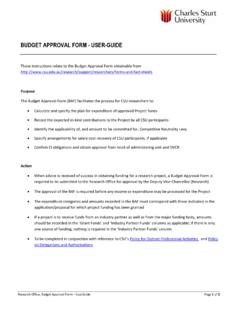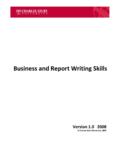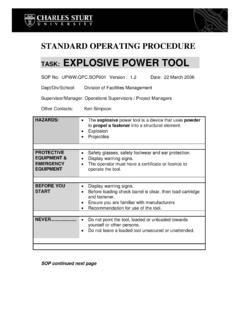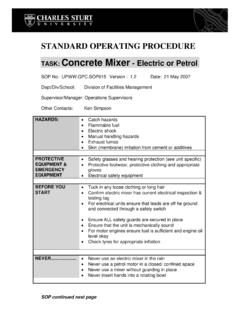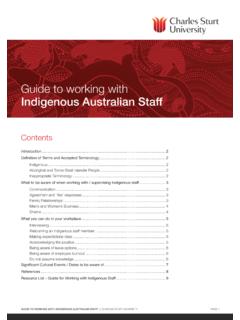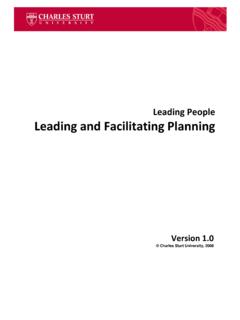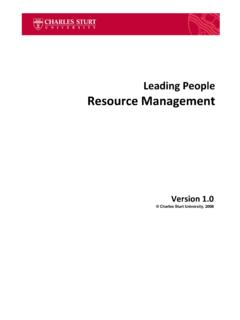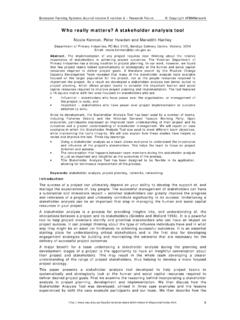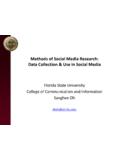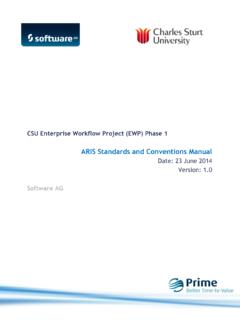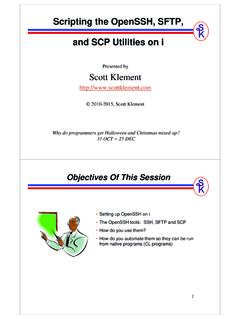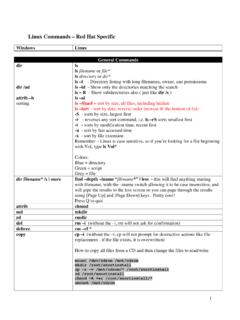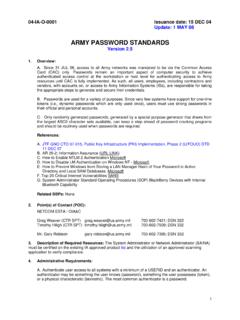Transcription of Windows 7 Beginners guide - Charles Sturt University
1 Windows 7 Beginners guide Written by: Education and Training Team Customer Services Management Division of Information Technology February 2011 Version 1 Copyright 2011 Charles Sturt University No part of this document may be reproduced, altered or sold without prior written permission of the Executive Director, Division of Information Technology, Charles Sturt University Where to Start There are a number of different ways that you may access the University Network in order to complete your day to day work. These are: The computer at your desk (your workstation) A Macintosh Computer A Laptop A Thin Client Session Thin Client allows you to access a Windows environment remotely from a computer.
2 It enables you to have access to the University Server as well as a wide variety of software that you would otherwise not be able to use unless it was physically loaded onto your computer. You access Thin Client from either your workstation or a Macintosh Computer. The first thing you will need to know is how to start your computer up. To do this follow the instructions below: 1. Make sure the power point at the wall, where the computer is plugged in, is on. 2. Push the power button on the front of the machine. This is usually labelled power , or with an IO symbol. You will see some lights near the power button come on, these are the lights to show you that the computer is running.
3 3. Check that the monitor is turned on (a green light will show on the monitor). If the monitor is not on, push in the power button on the monitor. Logging on, or Connecting to the University Network Every staff member and every student has their own USERNAME and PASSWORD. When your computer has powered up, you will see instructions to PRESS CTRL-ALT-DELETE TO BEGIN. This may sound a little confusing, but if you look at your keyboard you will see on the bottom row of keys a CTRL key, and an ALT key. On the right hand side of the keyboard you will see a row of keys between the numeric keypad and the letters; this is where the DELETE key is located. Press the CTRL and ALT keys together with the left hand and press the DEL key with the right hand.
4 Once you have done this you will see a window like the one below which will prompt you to enter your USERNAME and PASSWORD into the correct areas. Finally, when you have entered your details, click on the arrow button or press ENTER on the keyboard. This is called logging on or connecting to the University network. If anyone logs on with the avstore/avstore account they need to enter the username as .\avstore . The .\ tells the computer to use a local account as there is no longer the drop down box. NOTE: If a logon message displays that says The system cannot log you on now because the domain CSU MAIN is not available , your computer s network connection may not be working.
5 Check that the blue cable that plugs into the back of your computer is connected properly. Good Password Practices As you learnt previously in your IT Induction, your password needs changing every 60 days. Here are some tips to help you choose your password: Your password must: be between 6 and 8 characters in length (inclusive) be easy to remember not be your first name, surname or login name (with or without a number at the beginning or end) not be a single real word eg book (with or without a number at the beginning or end) Delete Key Alt Key Ctrl Key not be a similar format / theme / trend to your current password not be "qwerty" or something similar, as it is amongst a hacker's favourite first attempts.
6 Think of it as a challenge! You have to keep those nosy hackers out of your files with the best password you can think of - you want to make it simple for you to remember, but exceedingly difficult for them to guess. Hackers tend to use dictionary files to help them, so using real words is not a good idea. Good Password Examples (don t use these ones!) mrg00fee - 8 characters, no real words, but easy to remember. tac0snax - 8 characters, no real words, but easy to remember. s0ak&w8 (soakin' wet) - use numbers or special characters instead of letters in words, ("&","!", or "#") zcbm0864 - easily remembered keyboard patterns instead of words. NOTE: Banner users MUST NOT choose a password which contains special characters, or a password which starts with a digit (0-9) as Banner cannot handle them Privacy Statement and Code of Conduct The University has a Privacy Statement and a code of conduct called Policy for the Use of University Computing and Communication Facilities.
7 Please take time to read through these. The URL (internet address) is: Alternatively go to and: 1. click on the IT Services quick link at the left of your screen; 2. select IT SERVICES FOR STAFF; 3. select the ABOUT US link in the grey banner under the red logo; 4. select PRIVACY STATEMENT from the links on the left of the ABOUT US home page (this page also has a link to the code of conduct). Locking your Workstation When you leave your workstation temporarily, it is important that you lock it so that no-one else can access the system using your username and password. To lock your workstation use the same keys that you used to log on ie CTRL, ALT and DELETE keys. press the CTRL, ALT and DELETE keys simultaneously; the Windows Security dialog box will appear; Click on LOCK COMPUTER OR PRESS + L.
8 A COMPUTER LOCKED dialog box which says that your computer is in use and has been locked appears. Unlocking Your Workstation To unlock the computer; Press the CTRL, ALT and DELETE keys simultaneously; Type in your Password in the PASSWORD field, just as you did when you originally logged on. Another way of locking your workstation is to use a screensaver, which, when activated, automatically locks your workstation. You will learn how to activate this screensaver later in the module. NOTE: Remember, it is always best to lock your workstation when you leave it unattended so that no-one else can use your username and password. THE Windows OPERATING SYSTEM Every computer needs an operating system which lets you, literally, operate your computer.
9 There are a few around and Microsoft Windows is just one of them, albeit one of the most popular ones. Some of the functions the Windows operating system allows you to do are: Access applications (programs) on your computer (word processing, games, spread sheets, calculators and so on) Load any new programs on to the computer Manage hardware such as printers, scanners, mice, digital cameras Manage how files are stored on your computer (File Management, covered later in this module) Change computer settings such as colour schemes, screensavers, and the resolution of your monitor. What software versions do I have and what is on my computer? There are several versions of Microsoft Windows in existence.
10 You may have heard of Windows XP, Windows Vista and Windows 7. The normal PCs at Charles Sturt University are mainly loaded with Windows 7 at the time of writing this guide . You can tell what version you have (either at work, or at home) by: 1. Find the MY COMPUTER icon on the desktop; 2. Right mouse click on this icon and select PROPERTIES from the shortcut menu. The SYSTEM PROPERTIES dialog box will appear. This shows what version of Windows you are currently operating in. It is useful to know what version you are operating in because some instructions in learner guides are for specific versions. Other useful information you may be required to know, either because a technician or support officer asks you over the phone, or you are working at home, is what system configuration you have.
